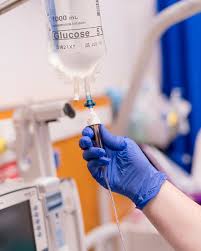Medical Science Notes – For W.B.C.S. Examination – Environmental Toxicology.
মেডিকেল সায়েন্স নোট – WBCS পরীক্ষা – পরিবেশগত টক্সিকোলজি।
The term ‘environment’ is defined as physical surroundings and conditions, especially those affecting the living organisms in the biosphere.Continue Reading Medical Science Notes – For W.B.C.S. Examination – Environmental Toxicology.
Living organisms interact with their physical and biotic environment and sometimes are able to partly modify their environment.
However, all the activities of humans are not environmentally friendly and our synthetic methodologies generate substances that are highly toxic to human health and the environment. Any substance or chemical that is poisonous, harmful or deadly is called toxic and the scientific study of poisons is called toxicology.
According to Lu and Kacew (2002), “toxicology is the study of the nature and mechanism of toxic effects of substances on living organisms and other biologic systems. It also deals with quantitative assessment of the toxic effects in relation to the level, duration and frequency of exposure of the organisms.”
Environmental toxicology deals with the sources, transport, degradation, bio-concentration in the environment and adverse effects on humans and other desirable species of a variety of toxicants that reach their vital tissues via air, water, food additives, pesticides and other chemicals often at low levels but may have long term adverse effects.
Thus, toxicology is one of the several multidisciplinary areas of environmental science. Some of these areas overlap and share common things. The presence of toxic substances in the environment at levels described as lethal or causing harmful effects to the life is considered a serious problem.
The scientific study of environmental toxicants, including their chemical nature, sources and status, environmental fate and harmful effects to living organisms may be called as Environmental toxicology. Now the efforts have been started in the developed and some developing countries that the chemical products should be designed to preserve efficacy of function while reducing toxicity.
In U.S. a programme was started in 1998 by the American Chemical Society (ACS) and the U.S. Environmental Protection Agency (E.P.A.) to replace more toxic and environmentally harmful toxic substances, wastes and insecticides. The environmentally benign chemistry that is focused on products and processes that eliminate or reduce the use and generation of hazardous substances and chemicals is called Green Chemistry (Cann and Connelly, 2000). Environmental toxicants are present in all the three components of biosphere and many of them contaminate our food, food products and food organisms.
The problem of toxic substances in the environment, in general, is tackled from several angles and perspectives. Accordingly, we use the terms like analytical toxicology, occupational toxicology, economic toxicology, clinical toxicology and forensic toxicology. Analytical toxicology deals with the identification of toxicants through analysis of gut contents and body fluids. Occupational exposure to toxicants may cause intoxication leading to acute or chronic adverse effects. Such cases fall in the domain of occupational toxicology.
The Economic toxicology deals with the use and risks involved in the use of food additives in food preservation and processing, synthetic fertilizers and pesticides in modern agriculture. Poisoning, accidental or occupational, which is so common in the use of synthetic pesticides and the contamination of food stuffs by these toxic chemicals are areas of interest in economic toxicology.
The Clinical Toxicology is concerned with the diagnosis and treatment of harmful effects caused by xenobiotics, i.e., toxic substances of foreign origin. It also involves administration of antidotes to counter the specific toxicity. Forensic toxicology deals with the medico – legal aspects of the harmful effects of toxic chemicals on humans, often in post-mortem material pertaining to cases of suicide by poisoning or attempted murder or murder after giving poison in milk or food.
The determination of alcohol concentration in blood and identification of suspicious substances in connection with trade in narcotics, as well as investigations on doping in sports by consuming steroids are included in forensic toxicology. Thus, toxicology has a vast scope and toxicity tests are conducted to evaluate the adverse effects of a chemical on living organisms under laboratory conditions.
A toxic chemical can exist in the environment in several different forms. For example, in aquatic environment, a chemical can exist in three different forms, which in turn affect its bioavailability. These are dissolved, adsorbed to an abiotic or biotic component and suspended in the aquatic system or deposited on the bottom material, and incorporated or accumulated in tissues of animals and plants.
Such chemicals can be concentrated and accumulated in organisms (bio-concentration and bioaccumulation) or may be magnified through food chain (bio-magnification). Chemicals may also be excreted back into the environment or metabolized (bio-transformed) into other forms, which may be more or less toxic than the original chemical.
In the beginning more studies were conducted in mammalian toxicology using laboratory rat as the test species. Of late, aquatic toxicology has developed as an important branch obviously due to the importance of water as an indispensable resource and the importance of aquatic animals in aquaculture and research. However, the two differ in several aspects. In mammalian toxicology, test organisms are homoeothermic (warm-blooded); their body temperature is relatively uniform and almost independent of environmental temperature; hence toxicity is rather predictable.
On the other hand, in aquatic toxicology, test organisms are poikilothermic, i.e., they are cold-blooded; their body temperature is variable and usually dependent on environmental temperature; thus toxicity may not be sufficiently predictable. In mammalian toxicology, the ‘dose’ of a test chemical can be measured directly and accurately, and administered by a number of routes. But in aquatic toxicology, the ‘dose’ is known only in terms of the concentration of the chemical in water and the length of exposure to it; the actual ‘absorbed dose’ is sometimes determined experimentally using bio-concentration and metabolic studies.
Please subscribe here to get all future updates on this post/page/category/website


 +919674493673
+919674493673  mailus@wbcsmadeeasy.in
mailus@wbcsmadeeasy.in







































































































